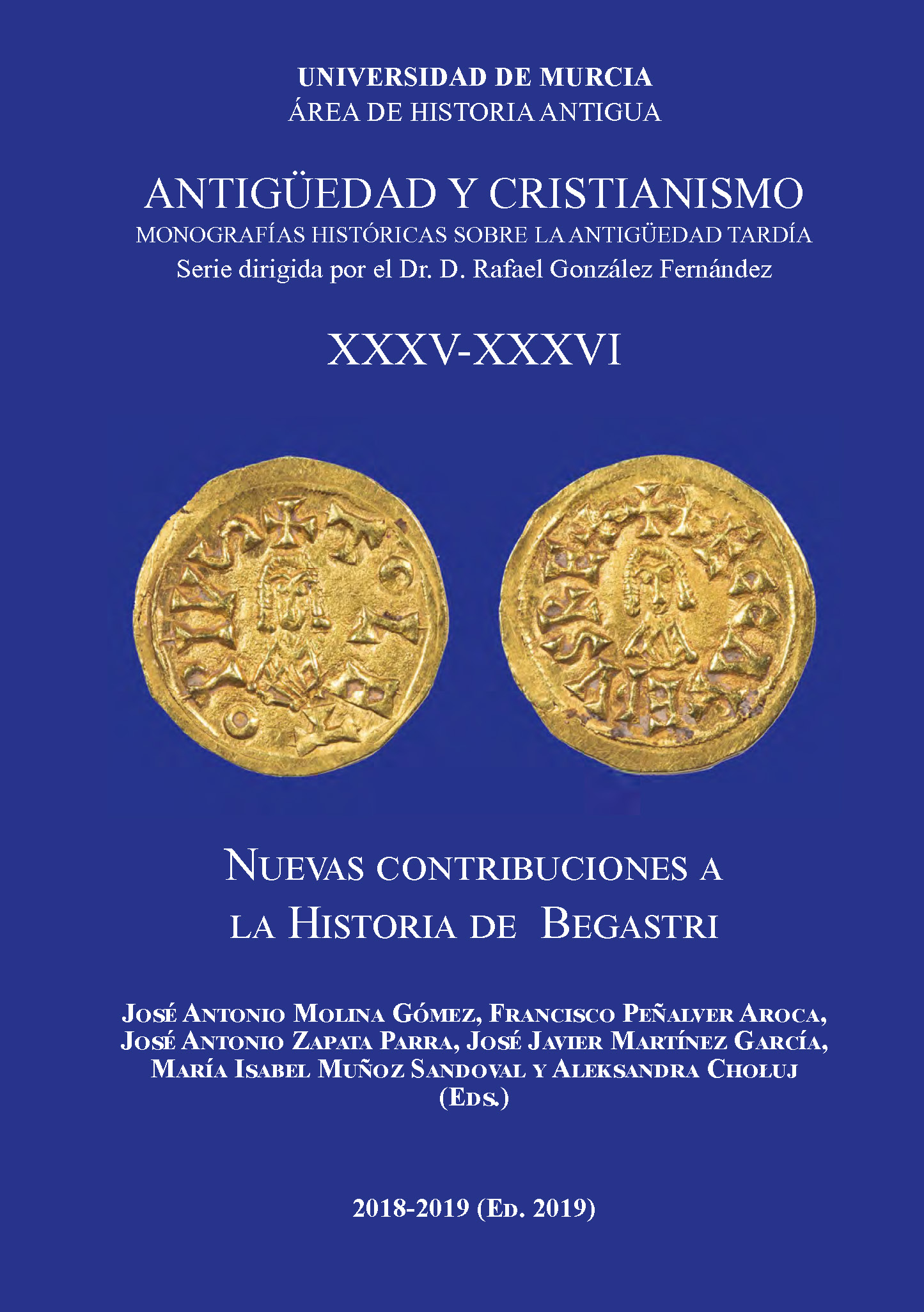Study of the subsoil using high resolution 2d and 3d electrical tomography in two areas of the Visigothic Iberian-Roman city Begastri, T.M. from Cehegín (Murcia)
Abstract
The aim of the electrical tomography research project in the city of Begastri was to demonstrate the great possibilities offered by this geophysical technique for the detection in the subsoil of the constructions carried out in the section of quaternary materials existing in the upper part of the hill. Several configurations have been used resulting in a wide range of depths and resolutions in the results, allowing us to detect buried structures with their geometry and state, detecting a significant discontinuity of these structures at 0.75 meters which represents an interesting qualitative leap in the use of the electrical tomography.
Downloads
-
Abstract327
-
PDF (Español (España))145
References
Cammarano, F., Mauriello, P. y Piro, S. High-resolution geophysical prospecting with integrated methods. The Ancient Acropolis of Veio (Rome, Italy). Archaeological Prospection 4, 1997, pp. 157–164. Olhoeft, G.R. Electrical properties of rocks. In: Touloukian, Y.S., Judd, W.R., Roy, R.F. (Eds.), Physical Properties of Rocks and Minerals. McGraw-Hill, New York, 1981, pp. 257– 330.
Espín De Gea, A.(CTM), Villalba López, j. (CTM), Gil Abellán, a. (CTM), Gómez Martín. r. y Rubio A. Bretones. Analysis of karsts cave structure for the location of a new entrance using 3D images obtained by ground penetrating radar. Proceedings of the 2009 5º Workshop on Advanced Ground Penetrating Radar. IWAGPR, 2009, pp. 156-161.
Molina Gómez, J. A. Begastri: La interpretación tras la campaña de excavaciones del 2006, Antigüedad y Cristianismo 23, 2006, pp. 269-273.
Negri s. , Leucci G. y Mazzone F., High resolution 3D ERT to help GPR data interpretation for researching archaeological items in a geologically complex subsurface. Journal of Applied Geophysics 65, 2008, pp. 111–120.
Peñalver Aroca, F.: «La carta arqueológica de Cehegín» Antigüedad y Cristianismo I, (2ª ed.1994), 1984, pp. 21-26.
1. The authors non-exclusively assign the exploitation rights (reproduction, distribution, communication and transformation) to the magazine.
2. The works published in this magazine are subject to the Attribution-ShareAlike 4.0 International license (CC By SA 4.0). Therefore, they can be copied, used, disseminated, transmitted and publicly displayed, provided that:
i) the authorship and the original source of its publication (journal, editorial and URL of the work) are cited, thus allowing its recognition.
ii) it is allowed to remix, transform or create from the material while maintaining the same license as the original.
Note: Articles prior to 2022 incorrectly display the CC by SA license in the abstract page. They are under a CC by NC ND license as embedded in the article pdfs. Articles published in 2022 and after are under the CC by SA license.

3. Self-archiving conditions. Authors are allowed and encouraged to electronically disseminate the pre-print (version before being evaluated) and/or post-print (version evaluated and accepted for publication) versions of their works before publication, as it favors their publication. Earlier circulation and diffusion and with it a possible increase in its citation and reach among the academic community. Color RoMEO: verde.
























